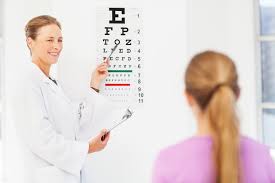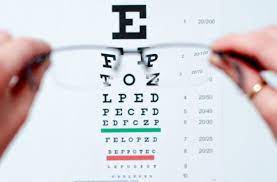Age-related Macular Degeneration (AMD or AMD).
The macula is the central part of the retina: it is essential to focus on what is in the center of our visual field. AMD is a disease that affects this area of the retina. There are two forms: in the exudative one, the macula is deformed due to an accumulation of liquids behind the retina; in the dry one the macula thins.
Affected people see the center of the visual field distorted. In dry AMD, small yellow deposits are observed on the person’s retina. It is a disease that worsens with the passage of time, one of the main causes of blindness in the over 65s, which usually begins to present itself around the age of 40.
One in 3 75-year-old Italians suffers from age-related macular degeneration
Glaucoma includes a group of diseases that lead, if not treated promptly, to blindness due to injury to the optic nerve. There are many causes, including (but not always present) excessive intraocular pressure.
They may show immediate symptoms, such as pain and partial loss of vision, or proceed gradually, without the person noticing until the damage is permanent, which is why it is important to have their eyesight checked even when they seem not to be. problems. About one million people in Italy are affected, but half are unaware of it.
Common Sight Diseases in Children
Amblyopia. Also known as lazy eye, this is a disorder in which one eye sees less than the other. It can be caused by a defect in vision, by squinting or other eye conditions of the child. It is important to identify this disorder before the age of 5, as at this age it will be much easier to treat than discovering it later;
Strabismus: The eyeballs are deflected, so that the eyes are not “straight”. We can speak of exotropia if the eye or eyes are turned inwards and of exotropia if outwards. This disorder determines the lack of coordination between the two eyes and can lead to loss of vision from the eye less able to focus on objects and depth.
- For these resulting functional defects not to become permanent, strabismus must be treated within 4 years of life;
- Conjunctivitis is most common in children under 5. It can be due to allergies and, especially in newborns, to infections. The doctor will treat the disease.
Some refractive defects: myopia, hyperopia and astigmatism
Color blindness. It is a congenital defect, that is, present from birth. Those affected cannot distinguish all colors. It cannot be treated but it is not a disabling condition. Its presence is generally investigated if there are family members who are affected by it;
 Sometimes children can have congenital cataracts, due to genetic, physiological (resulting from metabolic disorders present in the child) or environmental (for example from infections the mother had during pregnancy, such as rubella).
Sometimes children can have congenital cataracts, due to genetic, physiological (resulting from metabolic disorders present in the child) or environmental (for example from infections the mother had during pregnancy, such as rubella).
Blurred vision can occur even at the age of 10 of the child. It is important for an ophthalmologist to carry out a complete vision test on infants in order to be able to prescribe the most appropriate treatment;
The most common eye cancer in children is retinoblastoma, however very rare. It starts from the cells of the retina and manifests itself with symptoms common to other diseases: blurred vision, the appearance of black spots and / or lights in the visual field, sudden loss of vision. It is good to carry out frequent checks as the symptoms appear when the disease is already advanced and therefore the treatment is more complex.

